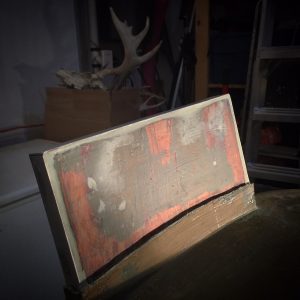She came to me on a cold November evening, and was unceremoniously dumped onto my garage floor. When Lee had said she might need a bit of work, he hadn’t been kidding. Anything wood was crumbling, anything metal had rusted, the fiberglass would need some touching up, trim had partially come off and was swaying gently in the cold Western breeze. But on the bottom lay a gentle layer of mud and grass, faintly smelling of the marsh. A few duck feathers clung to the hull, stuck to a patch of dried-up blood. It was clear: this was my new duck boat.
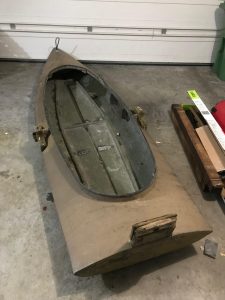
Where I live, it’s rather hard to give a boat, or anything really, a good hose-down between mid-October and some time in April. First of all, the water will be disconnected to prevent freezing of the pipes, and unless you want to turn the cull-de-sac into a hockey rink, water is best not used outside. But a series of buckets with hot water and soap turned to mud as I tried to clean my new prize inside and out. The kitchen drains did not clog, so I must have diluted the grime sufficiently.
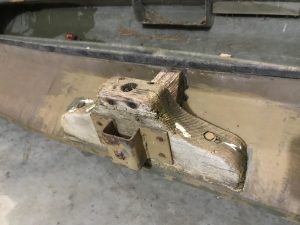
The boat was stripped of anything that would come off: the oar locks, protective strip along the top and the piece of rotten wood on the transom. Before me now lay a blank slate. One in need of some serious sanding, a coat of epoxy and a few layers of paint. But first the most pressing issue needed to be addressed, the rotten outboard motor mount.
I have no immediate intention to use a motor, but it would be nice to have that option some day. Unfortunately the wood of the mountain plate was very wet and very decaying. All the softwood layers of the multiplex had turned to mush, in I spent a few days prying away at it to get that out as much as I could. Then I set the boat upside down and ran a heater under the transom for a long time, until, much later than I had thought, the inside appeared to be dry. In the mean time I started work on the hull (see Part II).
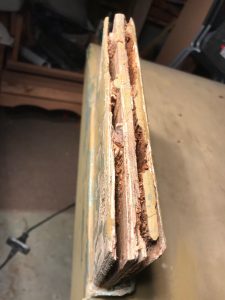
Enter modern chemicals, which according to the label turn mushy, punky wood into rock-hard material. Not sure if it did, but I poured it on thick. Next I used hardwood and bamboo strips and an epoxy to fill up the voids. It still being the middle of winter, all use of epoxy required lamps or heaters to provide a temperature that allowed it to set.
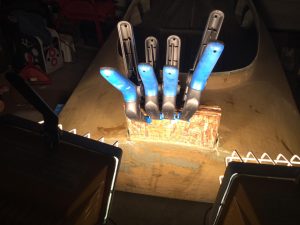
Once that was done, I rebuilt the outside by using aluminum strip, filling the surface with more epoxy. Time to continue working on the hull!
